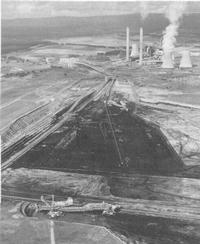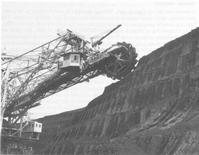


Chapter 11
I The Present Energy Economy
II Australian Energy Consumption
III Research And Development
IV Coal
V Oil And Natural Gas
VI Solar Energy
VII Nuclear Energy
VIII Bagasse Firewood And Other Biomass
IX Electric Power Generation And Distribution electric Power Generation And Distribution
i Types of generating stations
ii Transmission and distribution
iii System load control
iv Australian manufacturing in the power industry
v Queensland
vi New South Wales
vii Victoria
viii Tasmania
ix South Australia
x Western Australia
xi Northern Territory
xii Australian Capital Territory
xiii The Snowy Mountains Scheme
X Manufactured Gas
XI Industrial Process Heat
Sources
Index
Search
Help
Contact us

Victoria
The history of separate electricity bodies in Victoria followed a similar pattern to NSW until 1918, when an Act established the State Electricity Commission of Victoria (SECV). In this case, however, the one body covered both generation and distribution, a practice which has continued to date.While SECV supplies customers throughout the State, 11 metropolitan councils retained their rights to distribution, and are still supplied in bulk by SECV. Because of the smaller area and closer settlement of Victoria, there are no significant locations without transmitted supply.
In the early days, NSW black coal was shipped to Melbourne power stations, but since then the principal fuel has been brown coal from the enormous deposits in the La Trobe Valley, mined with German equipment and techniques in open-cut pits at Yallourn, Morwell and now Loy Yang. As dug, this material contains about two-thirds by weight of moisture, and specially designed boilers are required to handle this low calorific value fuel. Several attempts to pre-dry the product have been abandoned as uneconomic and somewhat dangerous, since the dry coal can ignite spontaneously. Briquetting plant, also of German design, was installed in the 1920s and the output was railed to Melbourne, where it became the main domestic heating fuel, as well as being burnt in the older power stations. Now the domestic market is quite small (especially since natural gas was reticulated), but briquettes are still used as start-up for the large raw coal boilers. SECV engineers have contributed greatly to the technology of mining, conveying, combustion and ash handling of brown coal, and it is to their credit that the huge boilers for the Loy Yang 500 MW sets have been so successful.


The development of natural gas (and oil) in Bass Strait in the 1970s had a significant effect on SECV. The piping of natural gas to Melbourne took over a large portion of the domestic and industrial heating load, to the loss of briquette and, to some extent, kWh sales. In 1979, when delays in new steam plant construction were being experienced, SECV brought into service a new 465 MW gas turbine station at Jeeralang (near Hazelwood), tapping off natural gas from the pipeline. Then in 1981 a single 500 MW set was commissioned at Newport on Port Phillip Bay using natural gas for steam raising; this station suffered considerable delay due to environmental objections, but has proved completely satisfactory in this respect.
Victoria has had an aluminium smelter at Point Henry, near Geelong, for many years. By a special arrangement with Alcoa of Australia, the latter was permitted to build a single 150 MW steam set at Anglesea, adjacent to a small deposit of brown coal. This set supplies most of the smelter load, running in parallel with the SECV system. A further Alcoa smelter has been constructed at Portland in the west of the State, and two 500 kV circuits have been run from the Melbourne area to meet this load. These circuits will also carry the power to be interchanged with South Australia when the interconnection with that State is completed in 1989.
Organisations in Australian Science at Work - Alcoa of Australia Ltd; State Electricity Commission of Victoria (S.E.C.)
 |
Australian Academy of Technological Sciences and Engineering |  |
© 1988 Print Edition page 830, Online Edition 2000
Published by Australian Science and Technology Heritage Centre, using the Web Academic Resource Publisher
http://www.austehc.unimelb.edu.au/tia/807.html